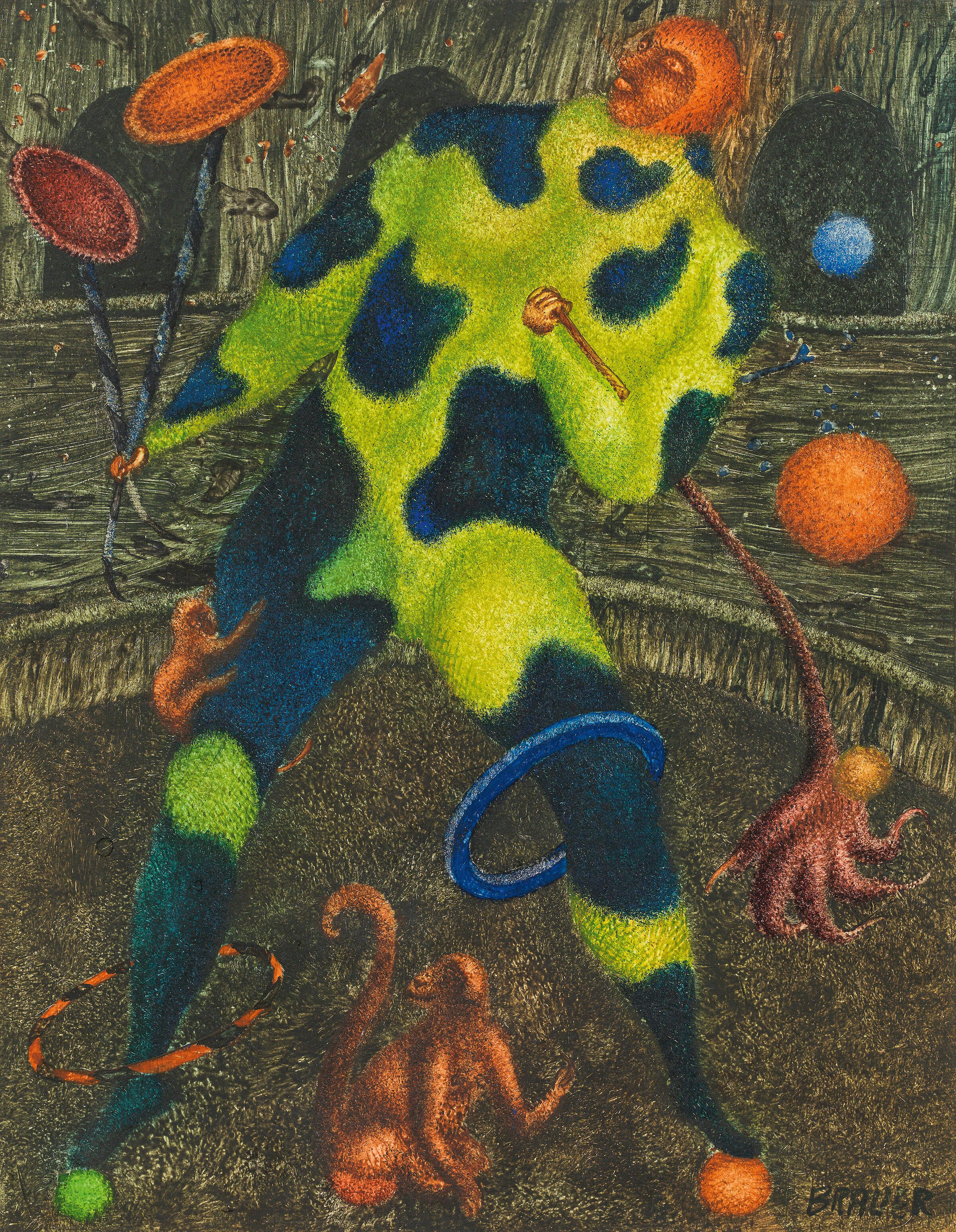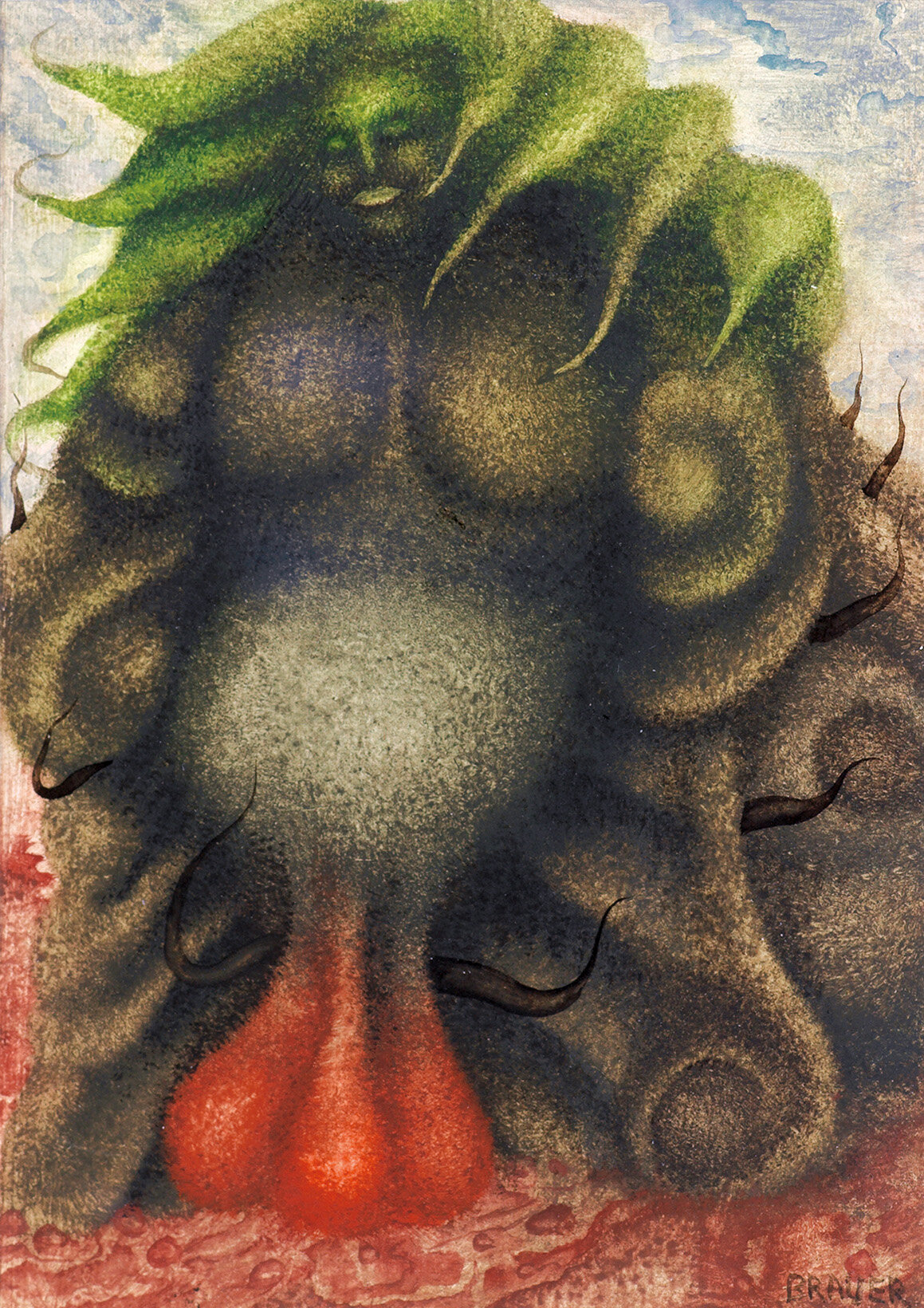Arik Brauer

Arik Brauer, Equilibrist, 1973
Gouache on paper
18.7 x 14.8 cm, frame: 31 x 35 cm
Courtesy Sylvia Kovacek GmbH, Vienna

Arik Brauer, Die Frau als Turm, 1967
Watercolor on vellum
14.7 x 10.5 cm, frame: 37 x 33 cm
Courtesy Sylvia Kovacek GmbH, Vienna
With Ernst Fuchs, Rudolf Hausner, Wolfgang Hutter, and Anton Lehmden, Arik Brauer was a key member of the Fantastic Realists. He was previously active as a figurative painter, while the early postwar years, when the members of the group met each other at the Vienna Academy, were characterized by a focus on abstraction. Brauer describes the predominant climate of the time as follows: “In the late forties, a belated surrealism was still too modern for Austria. There were a few bold pioneers among the critics who saw the future in us. But before we had even really emerged from the underground, we ended up in a new confrontation, which then pretty well meant that we were to stay in the underground all our lives. At that time, so-called abstract painting was marching triumphantly into Vienna, riding on the Marshall Plan.”1
Presumably this cultural climate was one of the reasons why Brauer, like his friend and colleague Ernst Fuchs, ventured out into the world. After travelling throughout Europe, parts of Africa, and Israel, he settled for a few years in Paris. As he began to experience success in the mid-1960s, he returned to Vienna and accepted commissions to design stage sets at the Vienna State Opera and other renowned opera houses.
Brauer often (though not exclusively) sought out the “fantastic” elements of his motifs in depictions of nature or of degrees of the interlinking of nature with culture. Two works are on show in this exhibition, the watercolor Die Frau als Turm (The Woman as Tower) (1967) and the gouache Equilibrist (1973). The title of the latter stands for a balancing artist in general and a tight-rope walker in particular. The circus of the demi-monde, which is based on succumbing to an illusion, was a subject and source of inspiration in various movements in painting in the nineteenth and twentieth centuries. Brauer’s circus artist is performing in several disciplines at the same time. In one hand he is balancing two plate-like discs on sticks, while he stands on balls and has rings twirling around both his legs; several small monkeys are clambering on his body, and in his other hand he is holding a rod on which there seems to be a third hand attached, which is juggling three balls. The figure itself has roughly human proportions, but the head and hands are small in comparison to the body, which is painted in a camouflage-like pattern of dark blue and yellowish green. In the second work on show here, the proportions of the “woman as tower” are only very partially based on the human form, as in the face, for example. The rest of the body is in simple round shapes in shades of gray, looking like stones and making the human figure quite literally into a tower. Both depictions seem far from reality, and in their own specific ways somehow superhuman, on the one hand thanks to the skill and agility of the circus figure, and on other because the woman is so robust, and could be seen as an allegory of stability. Beyond these ascriptions, both figures have a mythical element.
As well as working as an artist, Arik Brauer was also a musician and composer. In his various publications in the 1970s he can be seen as one of the founding fathers of so-called Austropop. He was also an important voice in social debates on anti-Semitism. Brauer had lost his parents in the Shoah, and had been a victim of violence himself, and throughout his life he never got tired of engaging in the debate, and his voice was significant in Austrian society beyond his work as an artist.
- Arik Brauer, „Diverse Erinnerungen,“ in Die Phantasten, ed. Gesellschaft bildender Künstler Österreichs, exh. cat. Künstlerhaus Wien, Vienna 1990, p. 93.